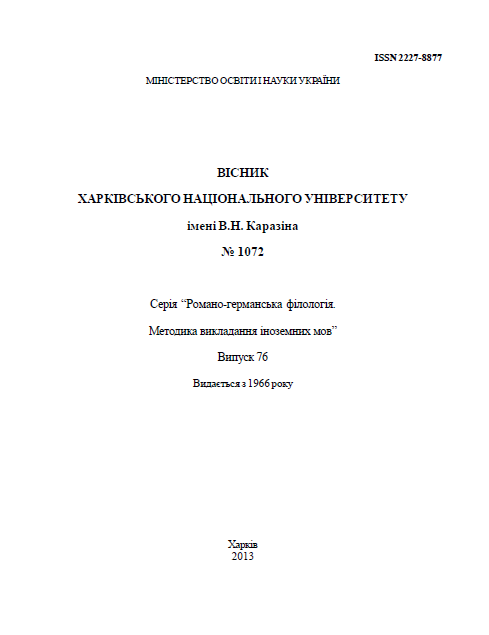Implementation of a Student-Centred Approach for ESL Teaching
Abstract
The article addresses the problem of the formation of students’ speech skills and habits in the course of ESL teaching within the framework of a student-centred approach. The formation of practical skills is bound up with the formation of higher level thinking skills, which help students to sift information, critically and creatively process it with the purpose of fruitful communication. The peculiarities of the English language learning content have been analysed and didactic potential of “learner – teacher interaction” strategies has been looked at.
Downloads
References
Кроуфорд А. Технології розвитку критичного мислення учнів / А. Кроуфорд, В. Саул, С. Метьюз, Д. Макінстер. – К. : Плеяди, 2006. – 217 с.
Клустер Д. Что такое критическое мышление? / Д. Клустер // Перемена, 2001. – № 4. – С. 36–40.
Тягло О.В. Критичне мислення – сучасна освітня інновація / О.В. Тягло // Вісник Національного університету внутрішніх справ. Спецвипуск.– Харків, 2002. – С. 29–35.
Allwright D. Focus on the Language Classroom / D. Allwright, K.M. Bailey. – Cambridge : Cambridge Univ. Press, 1991. – 250 p.
Dewey J. How We Think Courier / J. Dewey. – Dover Publications, 1997. – 224 p.
Estes Thomas H.Reading and Reasoning beyond the Primary Grades / Thomas H. Estes, Joseph L. Vaughan. – US : Mountain, 1986. – 282 p.
Nagy W. Learning Words from Context / W. Nagy, P. Herman, R. Anderson // Reading Research Quarterly, 1985. – № 20. – P. 233–253.
Osborn A. Applied Imagination; Principles and Procedures of Creative Problem-Solving / A. Osborn. – New York : Charles Scribner’s Sons, 1963. – 417 p.
Piaget J. The Origin of Intelligence in Children / Jean Piaget. – Michigan : International Universities Press, Inc, 1952. – 419 p.
Sanders R. The Art of Questioning / R. Sanders // Adult Learning Methods : a Guide for Effective Instruction. – Malabar, Florida: Kreieger, 1990. – P. 119–129.




